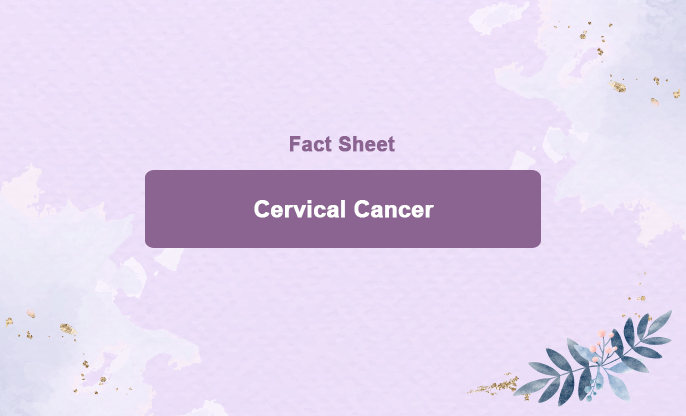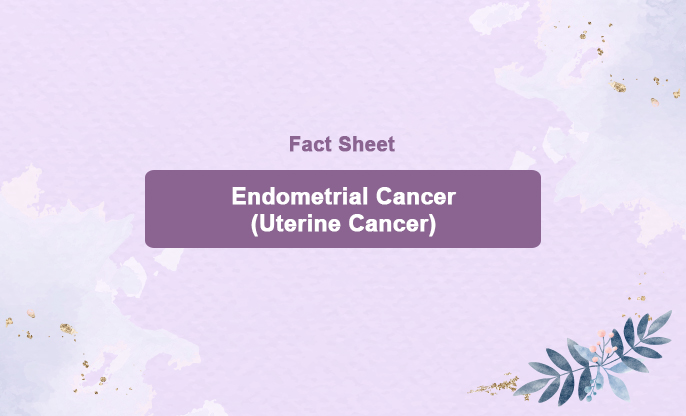
Cervical cancer originates in the cells of the cervix, which is the lower, narrow part of the uterus that connects to the vagina (birth canal). This type of cancer typically develops gradually over time. Before cervical cancer appears, the cells in the cervix undergo changes called dysplasia, where abnormal cells start to appear in the cervical tissue. If these abnormal cells are not destroyed or removed, they may eventually become cancerous and begin to grow and spread more deeply into the cervix and nearby areas.
The cervix consists of two main parts:
Ectocervix (Exocervix): The outer portion of the cervix, visible during a gynecologic exam, covered with thin, flat squamous cells.
Endocervix: The inner portion of the cervix forming a canal that connects the vagina to the uterus, lined with column-shaped glandular cells that produce mucus.
The squamocolumnar junction (transformation zone) is the border where the endocervix and ectocervix meet, and it is the area where most cervical cancers originate.
Cervical cancers are classified based on the type of cell where the cancer originates. The two main types are:
Squamous Cell Carcinoma: The most common type, accounting for up to 90% of cervical cancers, developing from cells in the ectocervix.
Adenocarcinoma: These cancers develop in the glandular cells of the endocervix. A rare subtype is clear cell adenocarcinoma, also known as clear cell carcinoma or mesonephroma.
In some cases, cervical cancer exhibits characteristics of both squamous cell carcinoma and adenocarcinoma, known as mixed carcinoma or adenosquamous carcinoma. Very rarely, cancer may develop in other types of cells within the cervix.
Symptoms of Cervical Cancer
Cervical cancer is often hard to detect early on because it usually doesn't cause symptoms until it has spread. When early-stage cervical cancer does cause symptoms, they may include:
- Vaginal bleeding after sex
- Vaginal bleeding after menopause
- Vaginal bleeding between periods or unusually heavy or long periods
- Watery vaginal discharge with a strong odor or containing blood
- Pelvic pain or pain during sex
Symptoms of advanced cervical cancer, which has spread beyond the cervix, may include the early-stage symptoms plus:
- Difficult or painful bowel movements or rectal bleeding during bowel movements
- Difficult or painful urination or blood in the urine
- Dull backache
- Swelling of the legs
- Abdominal pain
- Fatigue
These symptoms can be caused by conditions other than cervical cancer. Seeing a health professional is the only way to determine the cause. Ignoring symptoms can delay treatment and reduce its effectiveness if it is cervical cancer.
Causes:
HPV Infection and Cervical Cancer- Persistent infection with high-risk types of human papillomavirus (HPV) is the primary cause of nearly all cervical cancers. Specifically, two high-risk types, HPV 16 and HPV 18, are responsible for 70% of cervical cancers worldwide.
Weakened Immune System and HPV Infection
A weakened immune system can reduce the body's ability to fight an HPV infection, making it more likely for the infection to persist and progress to cancer. Individuals who are immunocompromised are at a higher risk compared to those with a healthy immune system. You may be immunocompromised if you:
Have an HIV infection or another disease that weakens your immune system
Take medication that suppresses your immune response, such as drugs to prevent organ rejection after a transplant, treat an autoimmune disease, or manage cancer.
Smoking and Exposure to Secondhand Smoke- Smoking or inhaling secondhand smoke increases the risk of developing cervical cancer. The risk escalates with the amount of smoking or exposure to secondhand smoke.
Reproductive Factors: The use of oral contraceptives (birth control pills) and having multiple children are linked to an increased risk of cervical cancer, though the reasons for these associations are not well understood.
Obesity: Cervical cancer screening can be more challenging in individuals with obesity, resulting in lower detection rates of precancers and a higher risk of developing cancer.
Treatment:
There are different types of treatments available for cervical cancer.
Surgery
Radiation therapy
Chemotherapy
Targeted therapy
Immunotherapy
Surgery: Surgery, or an operation, is sometimes used to treat cervical cancer, with the type of surgery depending on the cancer's location.
Cold Knife Conization: This procedure involves using a scalpel to remove a cone-shaped piece of tissue from the cervix and cervical canal, potentially removing all cancer. It requires general anesthesia and is performed in a hospital.
Sentinel Lymph Node Biopsy: In this procedure, the sentinel lymph node, the first node to which cancer is likely to spread, is removed. A radioactive substance or dye is injected near the tumor to locate the sentinel node, which is then examined for cancer cells. If cancer is found, more lymph nodes may be removed.
Hysterectomy: This surgery removes the uterus and cervix. It can be performed in several ways:
Total Vaginal Hysterectomy: Removal through the vagina.
Total Abdominal Hysterectomy: Removal through a large abdominal incision.
Total Laparoscopic Hysterectomy: Removal through small abdominal incisions, usually via the vagina but sometimes through an abdominal incision.
A radical hysterectomy removes the uterus, cervix, part of the vagina, and surrounding ligaments and tissues. The ovaries, fallopian tubes, or nearby lymph nodes may also be removed.
A modified radical hysterectomy removes the uterus, cervix, upper part of the vagina, and closely surrounding ligaments and tissues, removing fewer tissues than a radical hysterectomy. The ovaries, fallopian tubes, or nearby lymph nodes may also be removed.
4. Radical Trachelectomy: This surgery removes the cervix, nearby tissue, and upper part of the vagina. Lymph nodes may also be removed. The uterus is then attached to the remaining vagina with a cerclage to maintain closure during pregnancy, allowing the possibility of future pregnancies.
5. Bilateral Salpingo-Oophorectomy: This procedure removes both ovaries and fallopian tubes, typically when cancer has spread to these organs.
6. Total Pelvic Exenteration: This extensive surgery removes the lower colon, rectum, bladder, cervix, vagina, ovaries, and nearby lymph nodes. Stomas are created for urine and stool to exit into collection bags. Plastic surgery may be required to construct an artificial vagina.
Prevention:
Cervical cancer is highly preventable and curable if detected early. Most cases can be avoided through HPV vaccination, regular cervical cancer screenings, and timely follow-up treatments.






